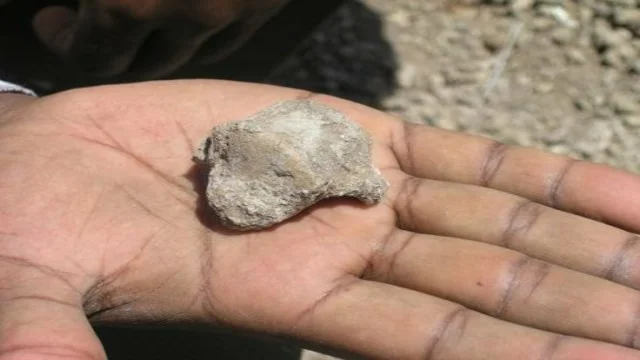8:20 PM Fresh finds shed light on the origin of the upright position of the forefathers of man | |
An exceptionally old special line between humans and our fellow apes is our capacity to roam on 2 legs - a line known as biped. Among mammals, only men and our forefathers make of this unusual balancing act. A fresh study conducted by a doctor of anatomy, faculty of medicine, Institute case Western Reserve, says that actually the ancestor of human beings largely trust on terrestrial bipedal behavior than expected earlier in the ancient fossil record. Scott W. Simpson, Ph. D., conducted a test of the fragmentary skeleton of a 4.5 million-year-old female human ancestor, Ardipithecus ramidus, which was seen in the region of study of the gona plan in the area of afar in Ethiopia. Not so long ago, analyzed fossils document a huge, but far from perfect adaptation to bipedalism in the AR. ramidus of the ankle and big toe (big toe) than earlier confessed. "Our studies demonstrate that, but Ardipithecus was bipedal lousy, it was a number than any other than we thought before," said Simpson. Fossils of this age are rare and suggest a little-known stage of human evolution. Thanks more to the absolute documentation of the function of the foot, ankle and foot in locomotion, the Simpson's Ardipithecus test can help illuminate the current awareness of time, context and anatomical details of ancient vertical walking. Past studies of other fossils of Ardipithecus have proven that It was actually capable of a terrestrial biped, and still had the ability to climb trees, but it lacked the anatomical specializations observed in the fossils of the Rut studied by Simpson. A fresh test posted in the Journal of Human Evolution, in this way, shows the diversity of adaptations during the transition to that as modern humans are strolling now. "The precedent, in fact, what ardipithecus had the opportunity to wander vertically, but imperfectly, and rush the trees that it as a major transitional figure in our human line," said Simpson. The key to the habituation of bipedality is considered to be the configuration in the lower extremities. For example, in distinction from the apes and monkeys, a great big finger of a man parallel to other fingers, which actually allows the foot to function as a lever to pull when walking. While the Ardipithecus had shifted the grip of tremendous finger, is necessary for climbing trees, test Simpson demonstrates the fact that he has used a tremendous personal finger in order to help propel him forward, showing a mixed transitional adaptation to a terrestrial biped. In particular, Simpson looked at the area of the joints between the arch of the foot and the big toe, which allowed Him to resume the range of movement of the foot. Until the joint cartilage no longer remains for the fossil Ardipithecus, the bone plane contains a proper texture that demonstrates actually that it alone was covered by cartilage. "It's a confirmation to the fact that cartilage demonstrates a tremendous finger feet were used in more similar to chelovecheski for this in order to put pressure," said Simpson. "It's a foot in the transition, one that demonstrates primitive, tree-climbing physiological properties, but one that still contains more Human foot embedding for vertical walking."In addition to this, when chimpanzees stand, their knees are present" from the outside " ankles, i.e. they are bow-legged. When people stand, knees are present straight above the ankle - Simpson noticed, in fact, that this applies to the fossil Ardipithecus. The Gona plan has been conducting endless field studies since 1999. The study area is located in a remote part of the depression of the East African rift, and its magnificent fossil deposits encircle the last 6.3 million years. Gona is more popular as documentation of the earliest evidence of Oldowan stone tool technology. The 1st fossils of Ardipithecus ramidus in the Rut were discovered in 1999 and described in the journal Nature in 2005. Gona has documented the 1st of the earliest popular fossils of the forefathers of man-6.3 million years ago. Plan of Gon co-Director Sileshi Semaw, candidate of medical Sciences, researcher of the research center CENIEH in Burgos, Spain, and Michael Rogers, PhD, Municipal Institute of southern Connecticut. Geological and contextual study for a given study was Led Naomi Levin, doctor of philosophy the University of Michigan, and Jay Quade, doctor of philosophy the University of Arizona. | |
|
| |
| Total comments: 0 | |
